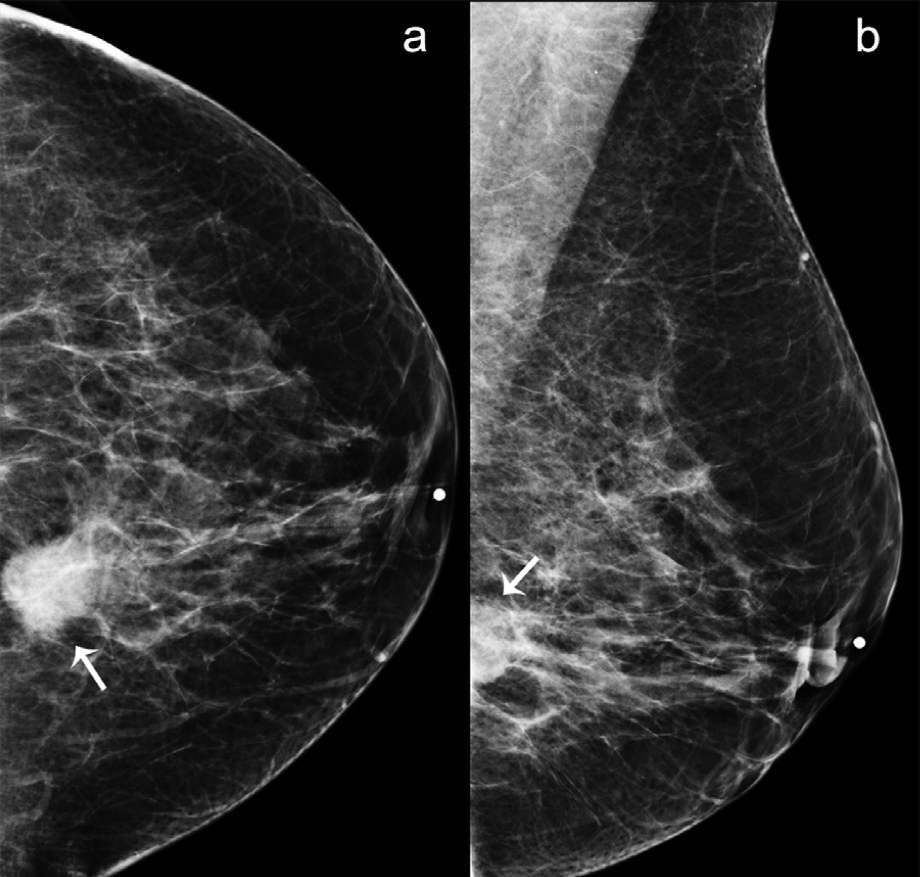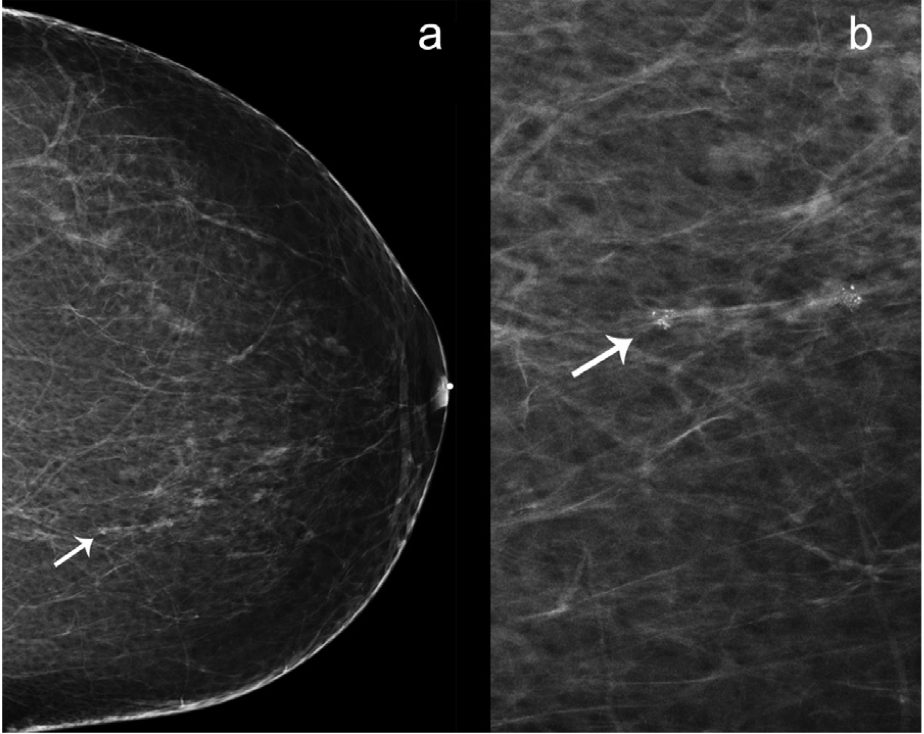Mammography VALET Improves Breast Cancer Screening for Underserved Women
Houston-area mobile mammography program brings screening mammography and access to diagnostic services to women who have barriers to care.
Bringing mammography to women in underserved communities can go a long way toward improving their access to the healthcare services they need. Mobile programs frequently catch invasive cancers early, improving a woman’s prognosis.
And, that is exactly what MD Anderson Cancer Center’s VALET has done. According to a team of researchers, led by David Spak, M.D., assistant professor and breast imaging specialist, this mobile program has focused on bringing mammography services to women in low-income communities in the greater Houston area.
The team shared the program's five-year performance results in a recent study published in Academic Radiology.
A 60-year-old woman presented for screening mammography. (A) Left craniocaudal mammogram demonstrates a round mass in the posterior central left breast (arrow). (B) Left mediolateral oblique mammogram demonstrates the same mass (arrow). Ultrasound-guided biopsy demonstrated evidence of high-grade invasive ductal carcinoma (ER+, PR+, and HER2-). A metastatic axillary lymph node was found without additional metastases, resulting in an overall stage of IIB. Courtesy: Academic Radiology

“Mobile mammography is one of the best strategies to target women of lower socio-economic status to increase access,” the team said. “Mobile mammography is also associated with an increased participation rate as women are more likely to undergo mammography within three months if offered a mobile option and health education.”
From Oct. 1, 2012, to Sept. 30, 2017, Project Valuable Area Life-Saving Exams in Town (VALET) provided 9,327 screening mammograms to 7,391 women. Most women – 5,871 (79.4 percent) – only received one examination, but the remaining participants received up to six screenings. The majority of women (76 percent) were Hispanic, and other patients were black (10 percent), Asian (8 percent), and white (4 percent).
The program has a budget of $1.6 million-to-$2 million, and it concentrates on women who have a variety of barriers to care, including travel costs, insurance, appointment availability, and procedure costs.
A 57-year-old woman presented for baseline screening mammography. (A) Left craniocaudal mammogram demonstrates coarse heterogeneous calcifications at 11 o'clock, 13 centimeters from the nipple (arrow). (B) Digital zoomed view of the left mediolateral oblique mammogram demonstrates the morphology of the calcifications in greater detail (arrows). Stereotactic biopsy revealed evidence of ductal carcinoma in situ. Further information was unavailable as the patient sought follow-up care in another country. Courtesy: Academic Radiology

Of all the studies, 1,686 were recalled for identified abnormalities, accounting for a 17.8-percent recall rate. A total of 101 exams were sent for biopsy, identifying 14 malignancies – 11 of which were invasive. The average tumor size was 2.3 cm, and the overall cancer detection rate was 1.5 cancers per 1,000 screenings. Fortunately, the team reported, the majority of the breast cancer identified demonstrated ER+, PR+ and HER2-receptor status, making them susceptible to hormonal therapy and placing a woman at lower risk for local or regional recurrence.
“These cases of invasive disease highlight the importance of mammographic screening for a patient population that may not have access to screening,” Spak wrote. “If these small, invasive cancers are allowed to progress, then the cost of treatment at a later stage can be more expensive.”
VALET offers several benefits, Spak’s team said. Not only does it potentially provide earlier detection for women, but multi-lingual patient navigators and technologists also improve efficiency, reduce patient history-related errors, and improve the experience for the patient overall. In addition, program staff can also connect patients with navigation services and can send patients reminders to avoid missing appointments.
Alongside mammography services, VALET coordinators are also exploring ways to incorporate digital breast tomosynthesis and whole breast ultrasound into the mobile program. Ultimately, the team said, they hope their program can serve as a model for other initiatives nationwide.
“These findings support the need for the development of similar programs in other areas in the United States with a mission to care for the underserved community,” they wrote. “Additionally, further investigation into mobile mammography programs would be helpful to identify patient factors, logistics, and technology, including digital breast tomosynthesis, that might prove beneficial.”
What New Research Reveals About Novice Use of AI-Guided Cardiac Ultrasound
April 4th 2025In a study recently presented at the American College of Cardiology (ACC) conference, researchers found that novice use of AI-guided cardiac ultrasound after an AI-enabled electrocardiogram increased the positive predictive value for reduced left ventricular ejection fraction (LVEF) or aortic valve stenosis by 33 percent.
Can Ultrasound-Based Radiomics Enhance Differentiation of HER2 Breast Cancer?
March 11th 2025Multicenter research revealed that a combined model of clinical factors and ultrasound-based radiomics exhibited greater than a 23 percent higher per patient-level accuracy rate for identifying HER2 breast cancer than a clinical model.